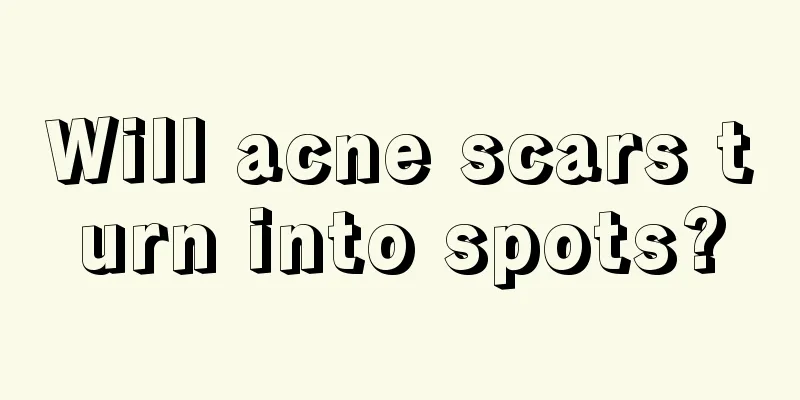How to quickly treat hands and feet

|
A common hand and foot disease is tinea pedis. It is said that suffering from this kind of disease is very uncomfortable, not painful, but itchy. Because this kind of disease is caused by bacteria, it will show ordinary itching at the beginning, and then it will gradually become more serious due to people scratching. It will not only be accompanied by peeling symptoms, but more serious ones will also lead to ulcers. After hearing this, I believe many people feel scared. So how should we deal with this kind of disease in our daily life? Let's take a look at how to quickly treat hands and feet: Tinea pedis and tinea manuum refers to an infection caused by dermatophytes invading the fingers, toes, between toes, and palms and soles. Wearing public slippers in swimming pools and public bathrooms can easily cause tinea pedis, and tinea manuum is often caused by tinea pedis. The main pathogens are Trichophyton rubrum, Trichophyton mentagrophytes and Epidermophyton etc. Candida albicans infection is also not uncommon in recent years. Second cause Tinea pedis is a superficial fungal infection that occurs on the palms, soles, fingers, and skin between toes. The pathogens of tinea pedis and tinea manuum are mainly Trichophyton rubrum, Trichophyton mentagrophytes and Epidermophyton floccosum. Tinea pedis is commonly known as "Hong Kong foot", also known as athlete's foot and foot dampness. Fungi like moist and warm environments. In the hot summer, people sweat a lot and wear rubber shoes and nylon socks, which provide a breeding ground for fungi. The condition usually improves in the winter, manifested by cracking of the skin. This is a contagious disease that can spread rapidly by sharing washbasins, foot basins, foot towels, hand towels, slippers and bathtubs. Three clinical manifestations The disease is divided into four types according to clinical manifestations: 1. Immersion type The skin between the toes is often white, eroded, and soaked with clear edges. The soaked epidermis is removed, leaving moist, bright red new skin. 2. Blister type Blisters are common on the soles of the feet or palms, and several blisters may even merge into larger blisters with clear boundaries, flat skin, and blisters that break and peel off. 3. Scaly type The main symptom is desquamation, with a few tinea pedis blisters. The blisters are dry and desquamative, with clear boundaries and no obvious inflammation. 4. Thickening type Common symptoms include thickening of the skin on the palms and soles, blisters and desquamation in summer, and skin cracking in winter. This disease is more common in adults, often occurring or aggravated in summer, and alleviated or symptoms disappear in winter when the climate is dry, so winter is the best time to treat tinea pedis and tinea manuum. Four treatments Apply miconazole or ketoconazole cream to the affected area 2 to 3 times a day. For those with skin lesions and erosion, you can apply Sanguisorba officinalis or 2% gentian violet solution externally. However, since fungal infections are deep in the skin, topical medications are difficult to cure. To completely cure tinea pedis and tinea manuum, you should go to the dermatology department of the hospital and use oral antifungal drugs such as itraconazole, fluconazole, etc. under the guidance of a doctor. Five preventions 1. Pay attention to personal hygiene. Do not use public slippers, foot basins, cleaning cloths, etc. Sterilize shoes, socks, and foot cloths regularly to keep your feet clean and dry. 2. Excessive sweating and injuries of hands and feet are often one of the most common causes of tinea pedis or tinea manuum. In daily life, you should reduce the adverse stimulation of chemical, physical, and biological substances on the skin of hands and feet, and drink less irritating beverages such as strong tea, coffee, alcohol, etc. 3. After washing your feet or taking a bath at night, wipe the moisture between your toes and apply disinfectant powder. The purpose is to keep the space between your toes as dry as possible to prevent reinfection of epidermal fungi. 4. Shoes, socks and foot cloths should be sterilized regularly to keep feet clean and dry. Public places such as bathrooms and swimming pools are the main places where tinea pedis is transmitted, and the disinfection management system should be strictly implemented. |
<<: How to quickly solve the problem of getting drunk on the face
>>: I couldn't fall asleep after being woken up in the middle of the night
Recommend
What are the auxiliary examination methods for cervical cancer
With the progress of the times, people's livi...
How long can one live with sequelae of myocarditis
Nowadays, many people suffer from heart diseases....
Feeling sleepy after a meal may lead to three diseases
Many people in their daily lives often breathe he...
How to care for lymphoma during pregnancy
Malignant lymphoma generally does not transfer to...
What are the symptoms of endometrial cancer? The most typical symptom is irregular vaginal bleeding
Irregular vaginal bleeding is the most typical sy...
About esophageal cancer nursing issues
How should patients with esophageal cancer be car...
Can patients with non-atrophic gastritis and gastric ulcer eat meat
Gastric disease is an extremely painful symptom f...
Can hot water be placed in the refrigerator?
Refrigerators have become an indispensable househ...
What is esophageal tumor
Be sure to control the temperature of food when e...
Can chestnuts be eaten overnight?
A lot of food in our daily life cannot be eaten o...
How many degrees of myopia is considered pseudomyopia? Timely correction is crucial
The near vision of pseudomyopia is 1.0, but the v...
9 good habits to make you fair and rosy
1. Your facial expression reflects your living co...
Can eating ginger help you sober up?
A little wine can make you happy, but drunkenness...
What are the examination items for teratoma
Many patients do not know much about teratoma. In...
What should lung cancer patients pay attention to in their diet? Five types of food that lung cancer patients should not eat
Lung cancer is a disease that is very difficult t...









